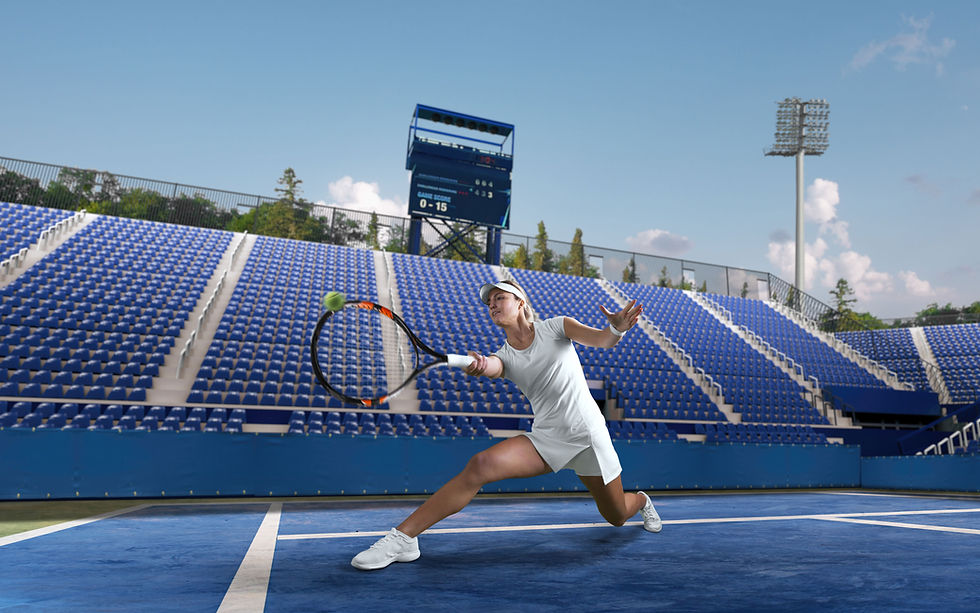A half volley refers to a shot where the player hits the ball immediately after it bounces off the ground. Unlike groundstrokes, where the player hits the ball after it has bounced and risen to a comfortable hitting height, the half volley is struck very close to the ground, often just as it's rising from the bounce.

The half volley is a challenging shot that requires excellent timing, coordination, and technique. It's typically used in defensive situations when a player is forced to react quickly to a low bouncing ball, such as when returning a low slice or drop shot. However, it can also be employed offensively, surprising opponents with a quick, low shot that stays close to the ground, making it difficult to return.
The key to hitting a successful half volley is to make clean contact with the ball just after it bounces, using a short and controlled swing. Because the ball is close to the ground, players often need to bend their knees and stay low to execute the shot effectively.
Overall, the half volley is a valuable skill in a player's repertoire, allowing them to handle low bouncing balls with precision and control.
Hitting a half volley in tennis requires precise timing and technique since you're hitting the ball immediately after it bounces off the ground. Here's a step-by-step guide on how to execute a half volley:
Anticipation: Anticipate that your opponent's shot will result in a low bouncing ball, which will require a half volley.
Footwork and Positioning: Quickly move towards the bouncing ball and position yourself with your knees slightly bent and your body leaning slightly forward. Get into a position where you can make contact with the ball just after it bounces, ideally close to the baseline or slightly inside the court.
Racquet Preparation: Prepare your racquet early by holding it with a firm grip and getting it into the ready position. Keep the racquet head up and in front of your body, ready to make contact with the ball.
Timing: Time your swing so that you make contact with the ball just after it bounces off the ground. This requires excellent timing and coordination to hit the ball at the right moment.
Compact Swing: Unlike a regular groundstroke, the swing for a half volley should be short and compact. Keep your swing controlled and focus on making solid contact with the ball.
Contact Point: Aim to make contact with the ball just after it bounces, ideally when it's still very close to the ground. Your goal is to hit the ball cleanly and keep it low over the net.
Follow Through: After making contact with the ball, continue the follow-through of your racquet in the direction you want the ball to go. This will help you maintain control and placement of the shot.
Recovery: Quickly recover back to the ready position after hitting the half volley, anticipating your opponent's next shot. Be ready to move and adjust your positioning as needed.
Practice: Like any tennis skill, mastering the half volley requires practice. Spend time hitting half volleys during practice sessions, focusing on timing, footwork, and control.
By mastering the half volley, you can add versatility to your game and effectively handle low bouncing balls, whether you're playing defensively or looking to take control of the point.
To learn more about half volleys as well as other basics of tennis schedule a lesson with our instructor at Potomac Tennis Pro.